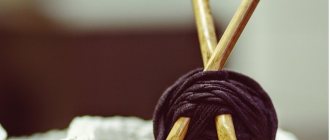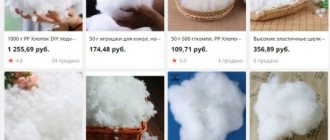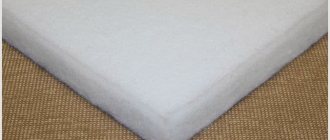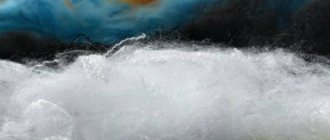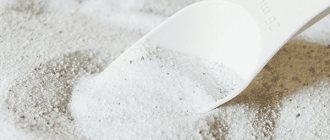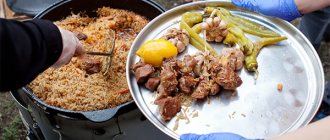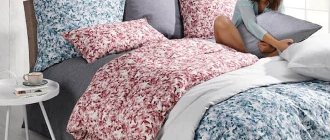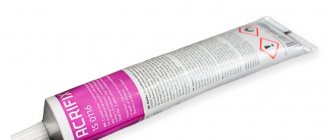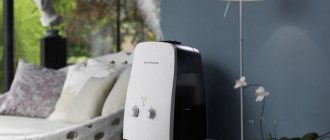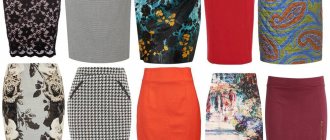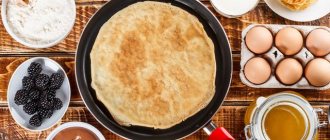August 27, 2022 Manager
Today craftswomen can bring to life any original idea for home comfort with their own hands. This became possible thanks to the development of technology and the emergence of affordable and easy-to-use materials, not least of which are fillers for pillows, blankets and home textiles. Today we will try to understand their diversity and determine which filler is best for pillows and blankets.
Synthetic feather duvet filler ▼
Holofiber pillow filling ▼
Down duvet filler ▼
Bamboo duvet pillow filler ▼
Thinsulate duvet filler ▼
Bottom line: so which filler is the best? ▼
Synthetic feather duvet filling
Sintepukh is a type of padding polyester. Its structure is similar to wool, but it is warmer and retains heat much better and does not cake. Made from polyester fibers using the combing method. It is rightfully considered one of the best fillings for blankets.
Synthetic down fabric comes in different densities and is well suited as a filler for blankets, bedspreads and home textiles. It is used in the production of furniture, sewing demi-season outerwear, making mattresses and blankets as a filler, for small decorative pillows, toys and covers. Buying high quality synthetic padding is also beneficial due to good air exchange.
Advantages:
- Lightness of finished products (up to 300 g/m2)
- Resistance to deformation (~up to 5 years)
- Low cost (price on average 1.5 - 2.5 dollars per 1 m.p.)
- Hypoallergenic and parasite resistant
Flaws:
- Not hygroscopic, poorly absorbs and evaporates moisture
- Made from polyesters
- Frequent washing reduces the thermal insulation properties
- Cakes and wrinkles over time
Holofiber pillow filling
Holofiber is the closest relative of synthetic fluff, as it is produced using similar technology. Inside, the synthetic down and holofiber fibers are hollow, which allows for good heat retention. Their only difference is in the form of release: synthetic fluff is produced in the form of non-woven fabric of different densities, and holofiber is produced in the form of loosely twisted elastic lumps that are sold by weight.
Holofiber filler is often used for stuffing large and small pillows, mattresses, baby blankets, bumpers and panels for cribs, toys and even upholstered furniture. Holofiber is popular among manufacturers of warm outerwear, as it can protect a person even at a temperature of -30 degrees. Large home textile factories use it as the best filling for pillows.
Due to its crumbly shape, holofiber is not the best filling for blankets; it is difficult to use, since quilted products made from it are extremely difficult to sew. However, many people prefer to buy holofiber because of its good performance properties.
Advantages:
- Excellent dimensional stability
- Durability and wear resistance up to 10 years
- Safety, resistance to bacteria and fungi
- High thermoregulation (up to -30 degrees)
Flaws:
- More expensive than synthetic fluff (price 3 - 3.2 dollars per 1 kg)
- More difficult to care for than synthetic fluff
- Complicated in sewing quilts
- Made from polyesters
Tips for choosing
podushki-iz-hollofaybera-7 podushki-iz-hollofaybera-6
The quality of sleep, brain and back health depend on the pillow. General recommendations to help you decide on a purchase:
- Ask the seller for a quality certificate. The product must comply with Russian Federation standards. This will help you choose a good thing and not a fake with a cheaper filler.
- Find out the product size and weight. The amount of filling for holofiber pillows affects the elasticity and height of the pillow. These parameters correspond to a comfortable position of the neck and head so that the blood vessels are not pinched. Pillow height = shoulder length. On average, for adults it is 10-14 cm. Broad-shouldered athletes may need 16 cm.
- There are different shapes of pillows, in addition to square and rectangle: circle, triangle, heart. But such options are recommended only for decorating a room.
- The density of the pillow depends on your usual sleeping position. Back sleepers need a medium-firm product. In a lateral position you will need firm support. If a person is used to sleeping on his stomach, it is worth buying a soft pillow for comfort.
podushki-iz-hollofaybera-5 podushki-iz-hollofaybera-15
A cover made from natural fabric is recommended. The sensations will be more pleasant, there will be no static electricity outside. It is desirable that the bedstead be removable. Then it can be washed separately from the pillow; there is no need to rip it out.
When choosing a pillow filled with holofiber for decoration, you should take a product with added foam crumbs. It is denser, better and will retain its original shape longer.
It is worth reading reviews about a specific manufacturer before purchasing. A high price may hide a low-quality product, but a little-known company may produce good products.
Natural down filling for blankets and pillows
Bird down filling for pillows and blankets is more expensive than any other. Most often, natural down from ducks and swans is used. The undeniable superiority of natural down over other types of fillings for blankets and pillows is its high ability to retain heat and excellent air exchange.
Pillows filled with natural down or down mixed with feathers require constant cleaning and drying. Washing down pillows at home is not recommended. About once every two to three years, it is necessary to take down bedding to the dry cleaner, as it accumulates dirt, moisture and pathogens.
Natural down is not the best filling for pillows and blankets intended for people with hypersensitivity and infants, as it can provoke allergic reactions of the respiratory tract and skin.
Advantages:
- Natural, environmentally friendly
- High thermal insulation (up to -50 degrees)
- Long service life (over 10 years)
- Lightness of finished products
Flaws:
- Allergenicity
- Susceptibility to fungi, harborage of microbes and dust mites
- Requires frequent and complex care
- Very high cost (~20-25 dollars per 1 kg)
Better without impurities
In addition to the beautiful design of a down jacket, it is also important to know whether it will keep you warm during a business trip to Yakutia and whether all the down will end up in the sleeve after washing. The most durable and warmest down jacket is considered to be made from goose, swan and eider down.
The label should say down. Feather is often added to fluff. The service life of the jacket is from 5 to 20 years. Duck down is the most short-lived: after 6-7 years it loses its properties. A less warm alternative to a down jacket is a jacket with a wool lining that says wool on the label.
You should not buy jackets with synthetic padding: after the first wash, it clumps into small clumps and the jacket becomes unusable.
Not so long ago they came up with a new material - synthetic fluff. It has the properties of down, does not cause allergic reactions and is cheaper.
Filling for pillows and blankets bamboo (Bamboo)
The properties of bamboo filling for pillows and blankets largely depend on the fiber production technology. One of them involves softening bamboo stems with natural enzymes. The result is an adhesive substance from which thin threads of the future filler are drawn. As a result of this procedure, 100% environmentally friendly bamboo filler is obtained.
The second method involves exposing bamboo to toxic substances to break it down into cellulose fibers, which are treated with a carbon-sulfur compound and bleached. Further washing removes most of the toxins, but this production method is not environmentally friendly. At the same time, natural bamboo is one of the best fillings for pillows and blankets.
Bamboo filling for pillows and blankets is not synthetic, although it is made artificially. It is hypoallergenic, breathes well and is slightly heavier in weight than synthetic padding.
Advantages:
- Hygienic and antistatic
- Hygroscopicity and good air exchange
- Low weight of the finished product
- Easy to clean, dries quickly
Flaws:
- Chemically produced fiber is not environmentally friendly
- The filler cakes quickly (after 3-4 years)
- Low thermal insulation relative to other fillers
Thinsulate - the best filling for blankets
Thinsulate, a unique filling for blankets and pillows, differs from other types of padding polyester in the thinness of the fibers and their chaotic weave. Initially created for sewing suits for astronauts, then it began to be used for winter clothing, as well as sewing bedding sets for children and adults.
Thinsulate is 3 times warmer than any of the synthetic fillers listed above. It is able to keep you warm even when wet, and does not cake even after many washes. Accordingly, a much smaller amount of Thinsulate is required to make a lightweight yet warming blanket. For example, 1 cm of insulation can protect against frost down to -25 degrees.
Thinsulate is the best filling for duvets, but not an ideal choice for sewing pillows. The fact is that filling a pillow requires a large amount of fiber, and Thinsulate is not cheap.
Advantages:
- Excellent thermal insulation
- Hygienic, thin and soft
- Elasticity and durability (products last up to 10 years)
- Easy to wash and dry
- Resistance to fungi and microorganisms
Flaws:
- Very high cost (depending on density from 7 to 17 dollars per sq.m.)
- Not good for pillows
- Made from synthetic polyesters
- Not hygroscopic, takes a long time to dry
Similarities
Both materials have similar qualities, so a pillow with such synthetic fillings has similar characteristics. Despite the manufacturing technology, synthetic fluff and holofiber are absolutely environmentally friendly. They are distinguished by their hypoallergenic qualities; dust mites and other microorganisms do not develop inside.
The materials do not allow air to pass through very well, which does not allow excess moisture to evaporate. Due to this characteristic, pillows are difficult to use in summer. The compression field quickly restores its original shape.
Total: what is the best filling for pillows and blankets?
Each craftswoman determines the best filler for herself according to her own criteria: this may be convenience, experience in working with similar material, and economic reasons. We tried to make an objective review, during which we found out which filler is best suited for pillows and blankets according to the 6 most important requirements for the material.
| Filler | Sintepooh | Holofiber | Natural fluff | Bamboo | Thinsulate |
| Thermal insulation | 3 | 4 | 5 | 3 | 5 |
| Environmental friendliness | 4 | 4 | 5 | 3 | 4 |
| Hypoallergenic | 5 | 5 | 2 | 3 | 5 |
| Wear resistance | 4 | 5 | 3 | 2 | 5 |
| Exploitation | 4 | 4 | 2 | 4 | 5 |
| Price | 5 | 4 | 2 | 4 | 2 |
| Rating | 4,17 | 4,33 | 3,33 | 3,17 | 4,33 |
Based on the results of evaluating the properties, we determined the best filling for blankets and pillows - they turned out to be synthetic holofiber and Thinsulate. The structure of holofiber allows it to be used as the best filler for pillows, bumpers, soft toys and any other bulk products. Thinsulate is available in the form of a heat-intensive thin fabric, so it has established itself as the best filling for blankets on the market.
In the Decobay online store you can buy filling for pillows and blankets at low prices. We will provide fast delivery throughout Belarus; if necessary, a courier in the city of Minsk will deliver the order to your door. A wide selection of payment methods and a huge selection of high-quality fabrics to realize your bold ideas awaits you in the Decobay catalog!
